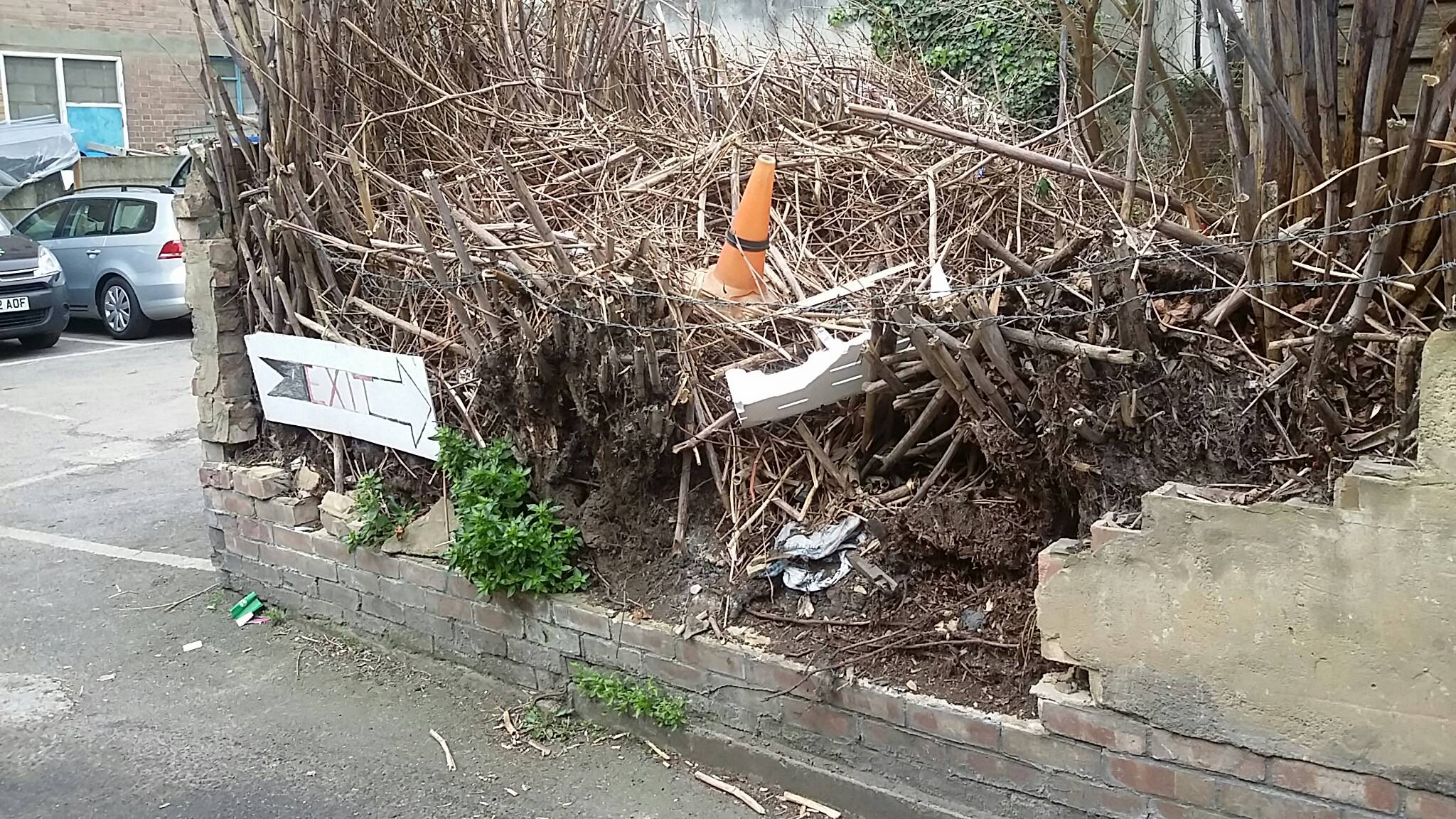Recent research indicates that the physical damage caused by Japanese knotweed is no greater than that of other disruptive plants such as Bamboo and Buddleia and trees. However, as experts on the ground we know how serious knotweed can be when it comes to protecting the integrity of property or building structures – including underground infrastructure.
Take a look at some of these examples…
Forcing boundary structures
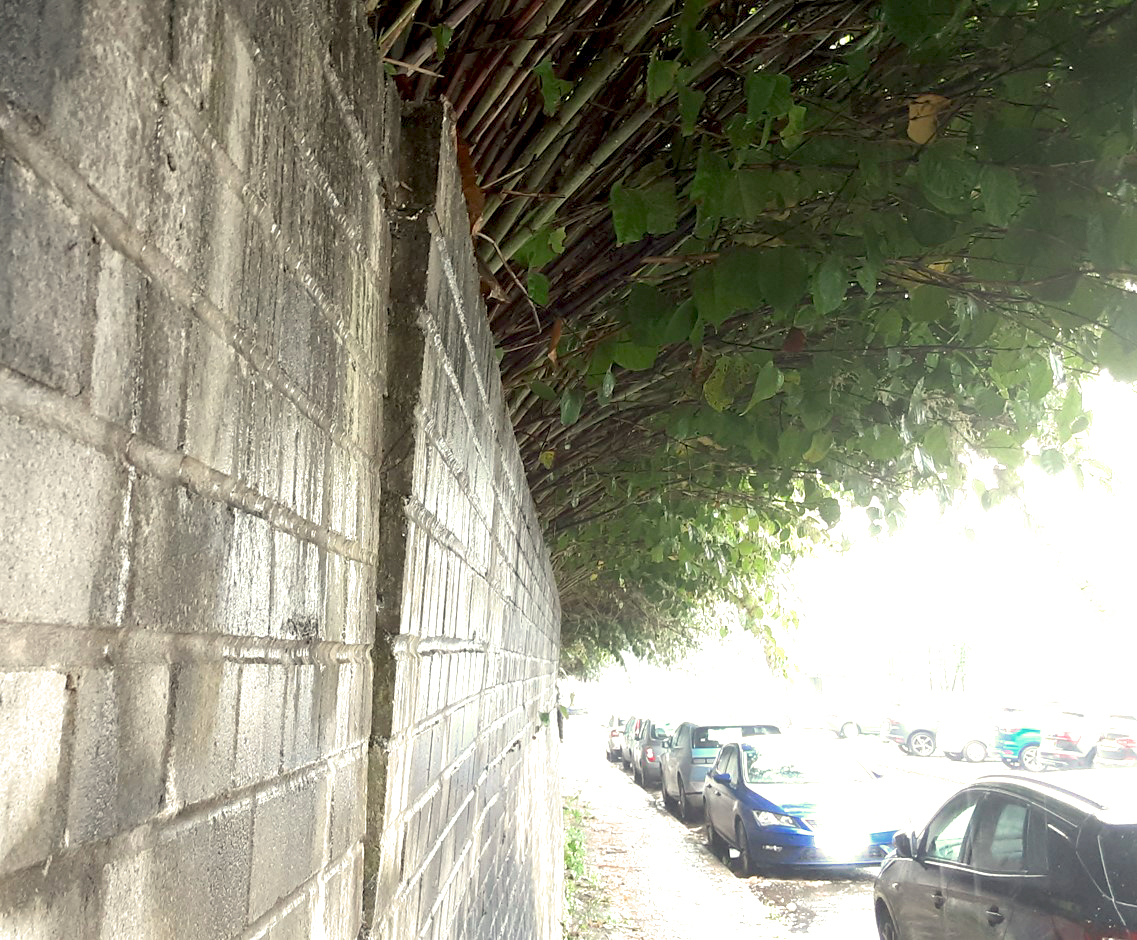
Above we can clearly see the forceful nature of Japanese knotweed, as its vigorous growth (in this case left unchecked) has created a huge canopy of thick stems and dense foliage (this image was taken recently). The concrete wall is being pushed out and will eventually weaken to the point of collapse.
And the close up image of this wall below shows how virile the knotweed plant is – even flowering whilst growing through a crack in the wall pictured above. Knotweed is a bit like having a water leak – it’ll come through the tiniest of spaces and where you least expect it.

Below we can see the full force of knotweed as its spring growth emerging from winter drives between gaps, pushing up concrete slabs. In the background you can see more shoots beginning to do the same – causing widespread damage to this patio area.
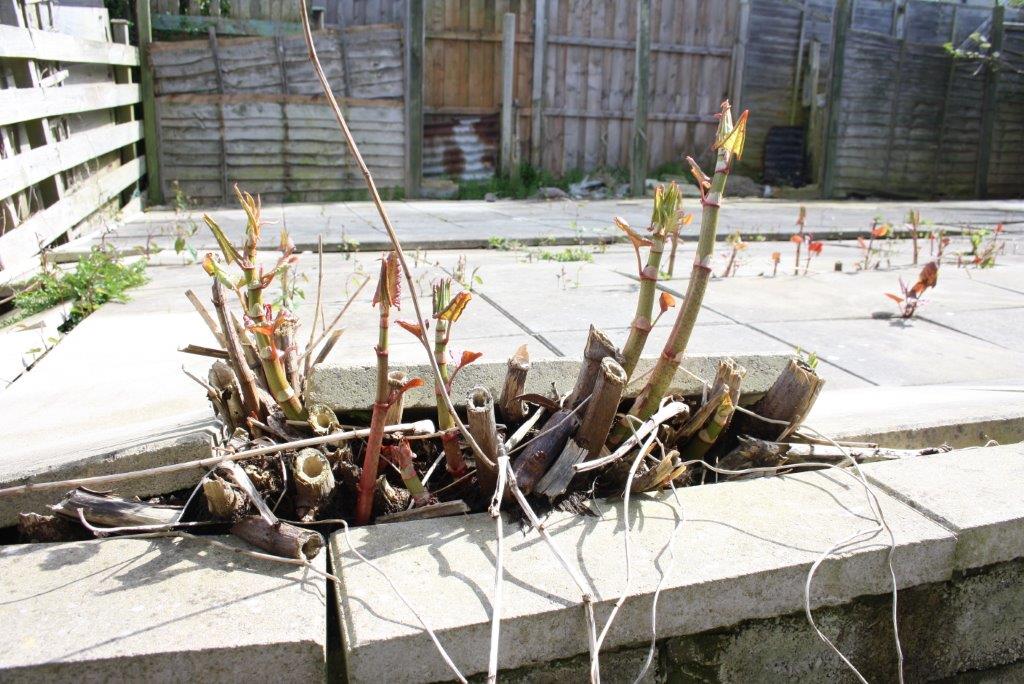
Breaking into property
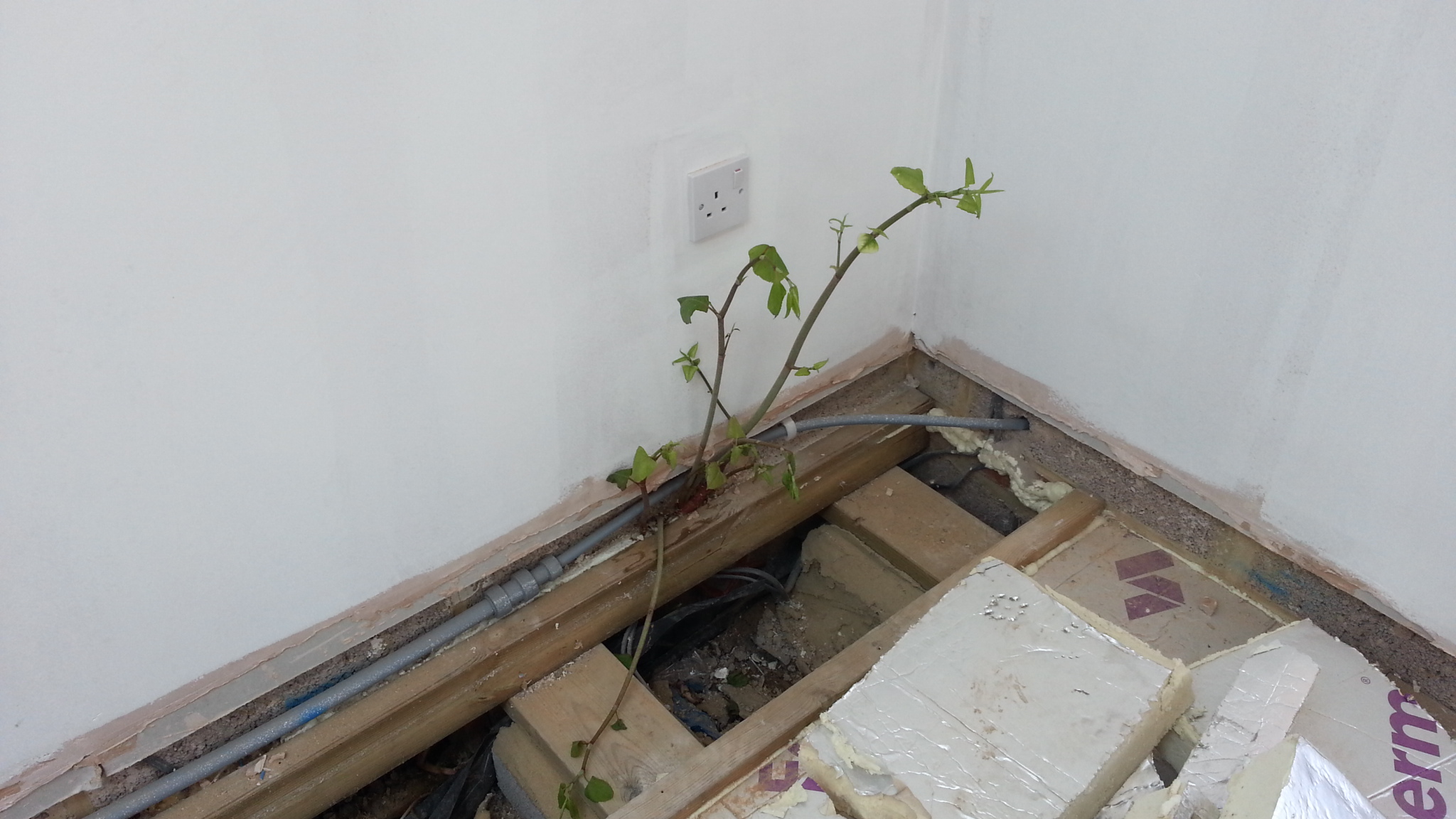
As already mentioned knotweed will take advantage of any weak areas to grow through. As we can see in the image above knotweed roots have managed to penetrate the foundations of this property and have grown along a cable route behind the skirting board. The problem then is tracing it back to the root source (the rhizome system) to ensure that every fragment is removed, if not it will just pop up in another part of the house!
Growing wherever it can
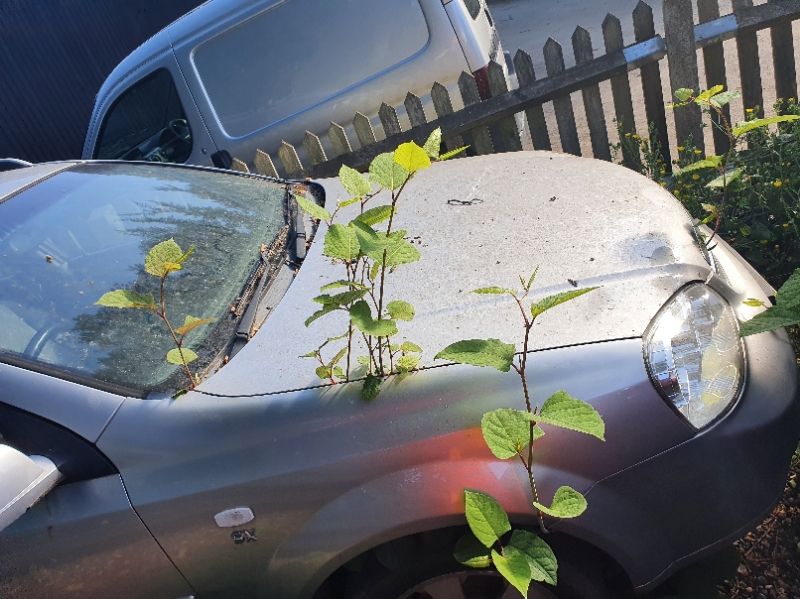
If proof was needed as to knotweed’s ability to grow through the smallest of space – take a look at the knotweed stems growing through this car. Clear evidence that if neglected, the incredibly resilient knotweed plant will take over pretty much anywhere!
An unexpected (and unwanted) guest on new build developments
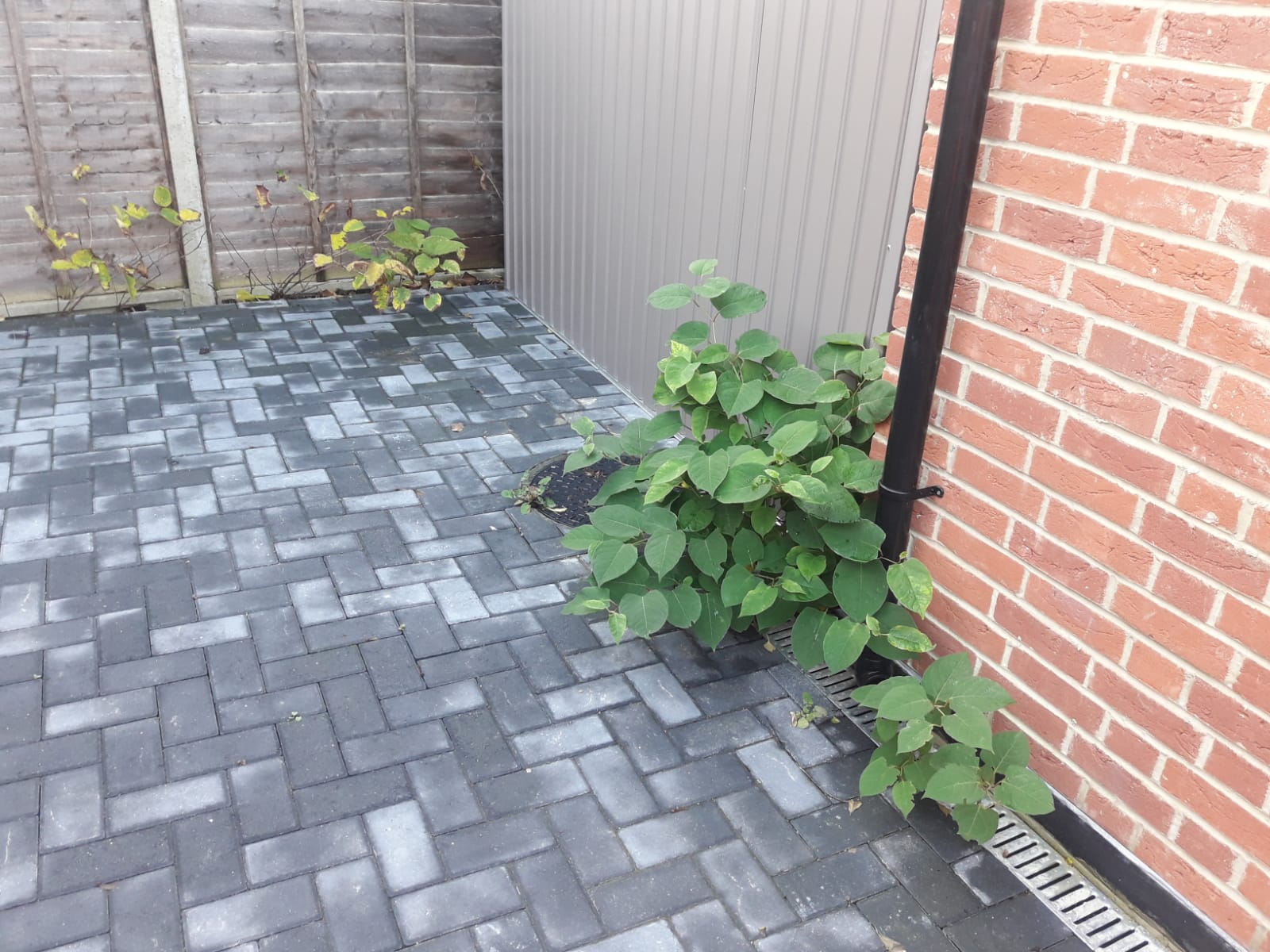
New housing developments are at particular risk of having knotweed as an unwanted arrival after properties have been purchased. No new home owner wants to see this plant spring up just after they move in. But unless a pre-planning survey is carried out by the landowner or property developer, knotweed can often be missed, especially in winter when knotweed lies hidden underground. The repercussions of this scenario are massive – with property being devalued or loss of sales for the developer.
Why is knotweed such a threat?
Japanese knotweed (Fallopia japonica) is notorious for its invasive nature and aggressive growth patterns. Unlike many other non-rhizomatous plant species, its extensive root system can penetrate through vulnerable foundations, cracks in walls, and infrastructure, causing the sort of damage shown above.
Tiny fragments of this plant no bigger than a thumb nail will establish as new plants, making it hard to control without professional services. Knotweed also poses a threat environmentally, depleting our native flora and disrupting local ecosystems.
Is it worse than Bamboo?
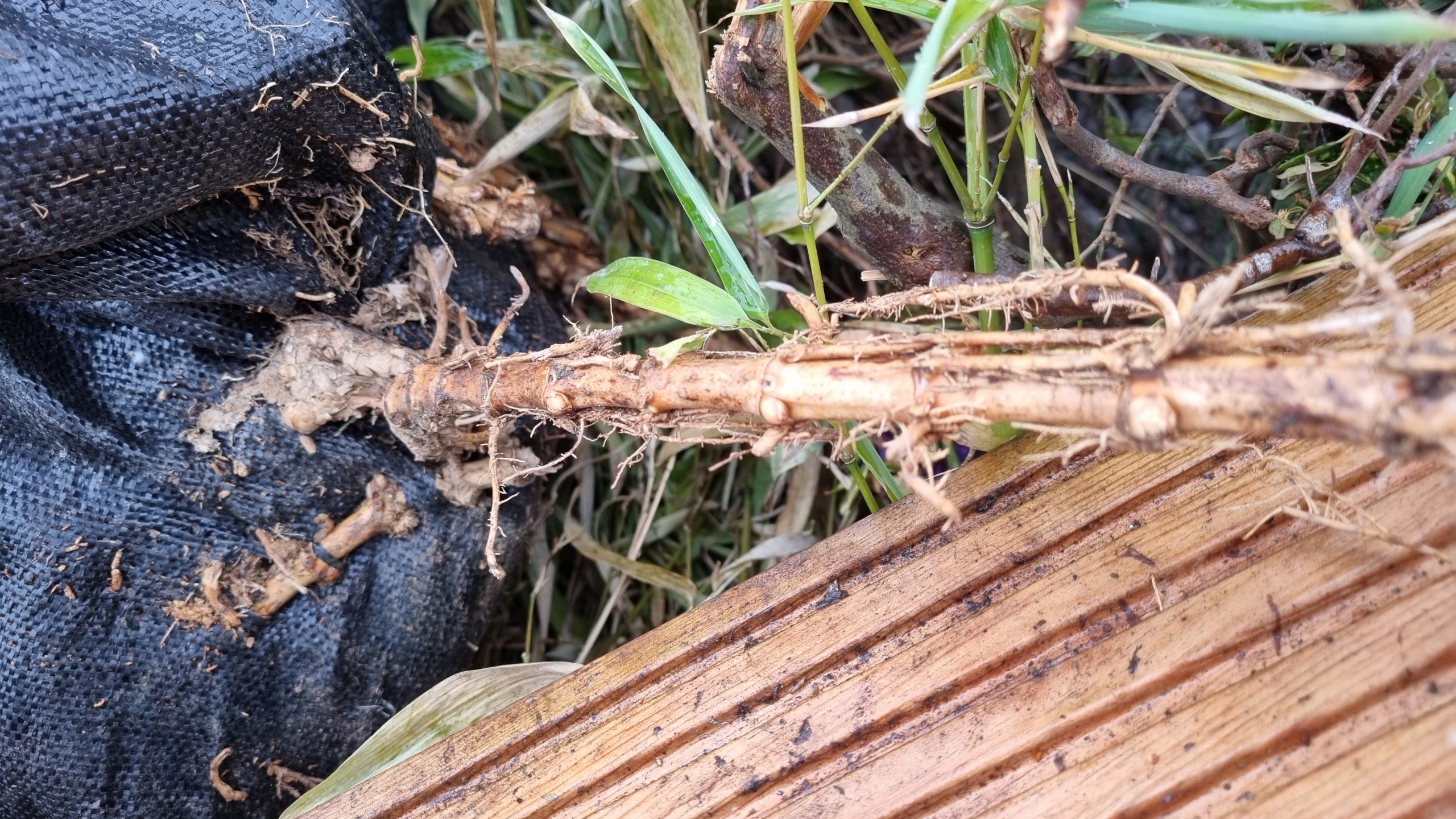
Above we see the root system of invasive Bamboo – its rhizomes are similar to knotweed’s. Bamboo can be compared to knotweed for its invasive growth pattern, underground rhizome system and difficulty in removing, but, as experts in the industry we know that Japanese knotweed presents unique challenges due to its resilience and ability to thrive in most climates and environments.
Eradicating knotweed once established is particularly difficult, and the associated costs and legal implications underscore its severe impact on property values and the surrounding environment. Understanding these distinct characteristics is crucial for implementing effective management strategies and minimising its damaging effects on properties and natural habitats.
What can be done?
The simple answer is to deter knotweed growth from the start.
This means having a survey carried out by a professional knotweed removal contractor such as Japanese Knotweed Ltd if land or property is planned for either development or sale.
For homeowners thinking of selling up it is a legal requirement to declare whether knotweed is present, failure to do so could result in legal implications. Landowners or property developers should ensure the site is free of knotweed and any other invasive plants prior to either purchase or planning stage.
Avoiding risk starts with a knotweed survey!


